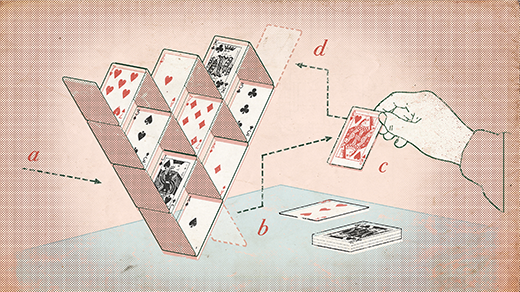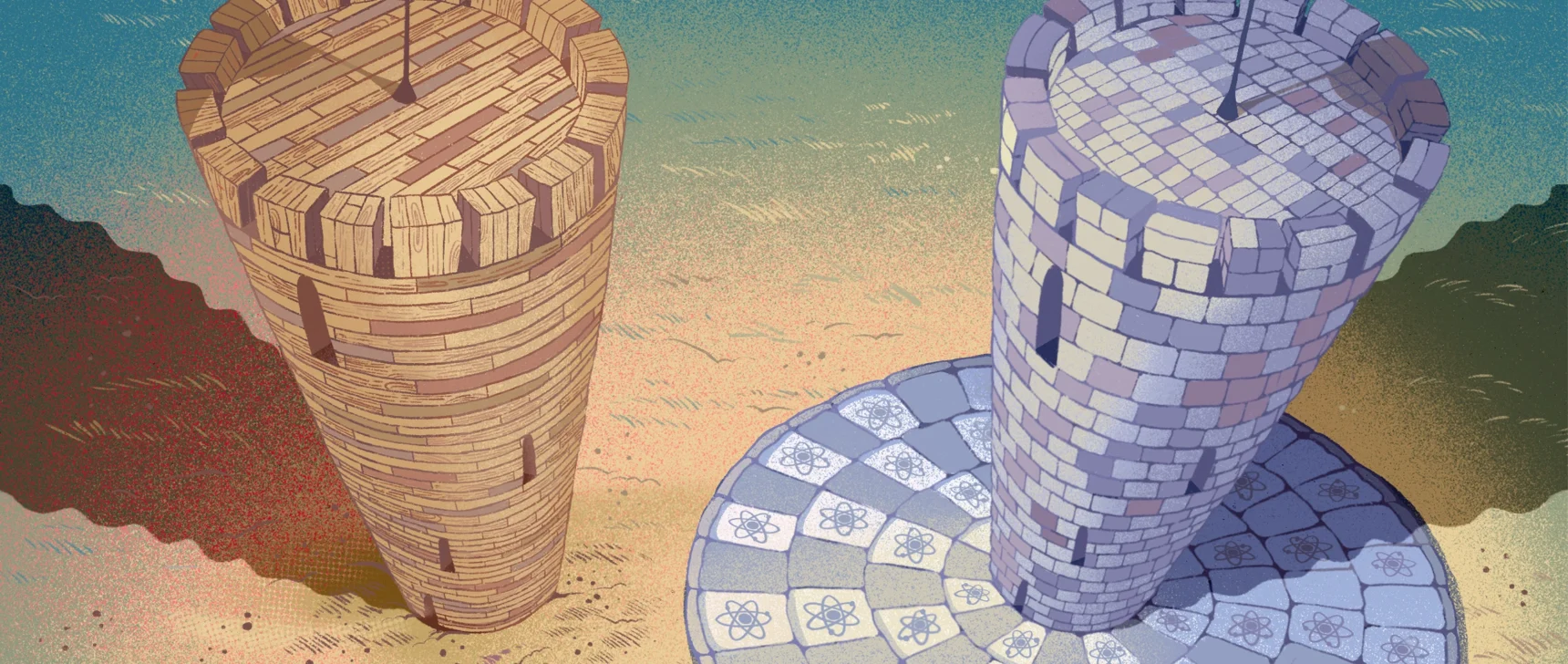Why the Key to a Mathematical Life is Collaboration
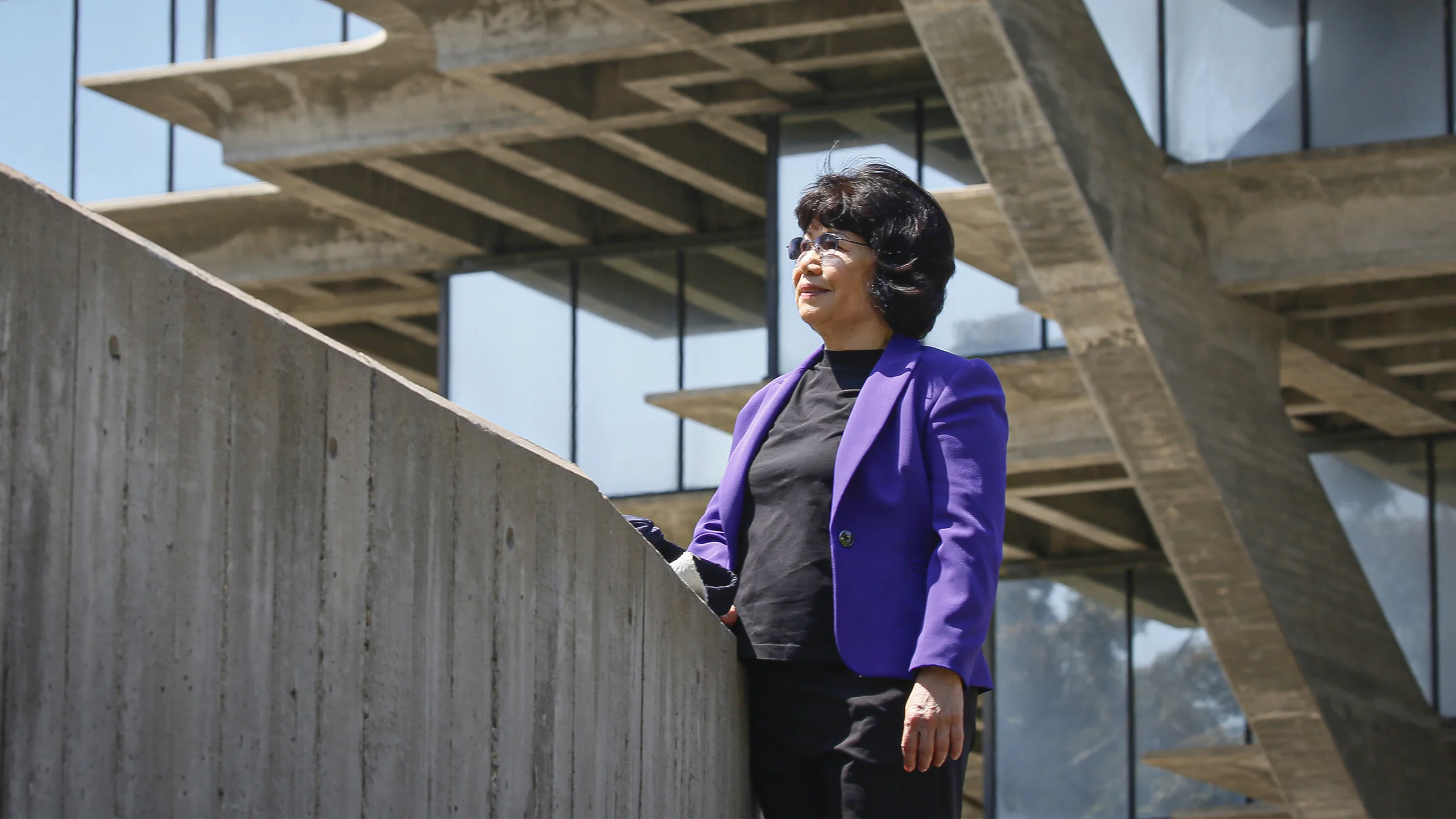
Fan Chung has linked her mathematical work to problems in computer science, engineering and physics. In one case, she even drew a connection between her research and the chemistry of the “buckyball” molecule.
Peggy Peattie for Quanta Magazine
Introduction
In 1971, Fan Chung, then in her second year of graduate school at the University of Pennsylvania, received an assignment. Her thesis adviser, Herbert Wilf, asked her to read the proof of a problem in Ramsey theory, an area of mathematics that explores the inevitable emergence of patterns in networks of vertices and edges called graphs. They planned to discuss it again the following week.
But a week later, Chung had done far more than just read the proof. To Wilf’s surprise, she claimed that she had also figured out a way to improve it — to prove a better estimate for the problem. “He was so pleased,” she said. More than 50 years later, no one has managed to improve on her result.
Chung grew up in Taiwan in the 1950s and ’60s, and enjoyed math as a young child. Her father, an engineer, encouraged her interest, telling her that “mathematics gives you power” — the power to understand chemistry, physics and other aspects of the world.
After completing her undergraduate studies at National Taiwan University and her graduate studies at Penn, she joined Bell Laboratories in 1974, where she worked for 20 years, first as a researcher and later as a manager. During that time, she grew passionate about another aspect of research: how human connections fuel mathematical innovation. A prolific collaborator who often crosses disciplines, Chung has authored over 300 papers with more than 150 coauthors. The relationship between collaborators “is more substantial than the usual friendship,” she said.
It was also during her time at Bell Labs that she met Ron Graham, a mathematician who became her closest collaborator. The pair worked on math problems together for a decade before they started a different type of collaboration in 1983: marriage. Graham coined the notion of the Erdős number — a measure of the collaborative distance between mathematicians and the famed mathematician Paul Erdős. Both Chung and Graham have an Erdős number of 1, having worked directly with him.
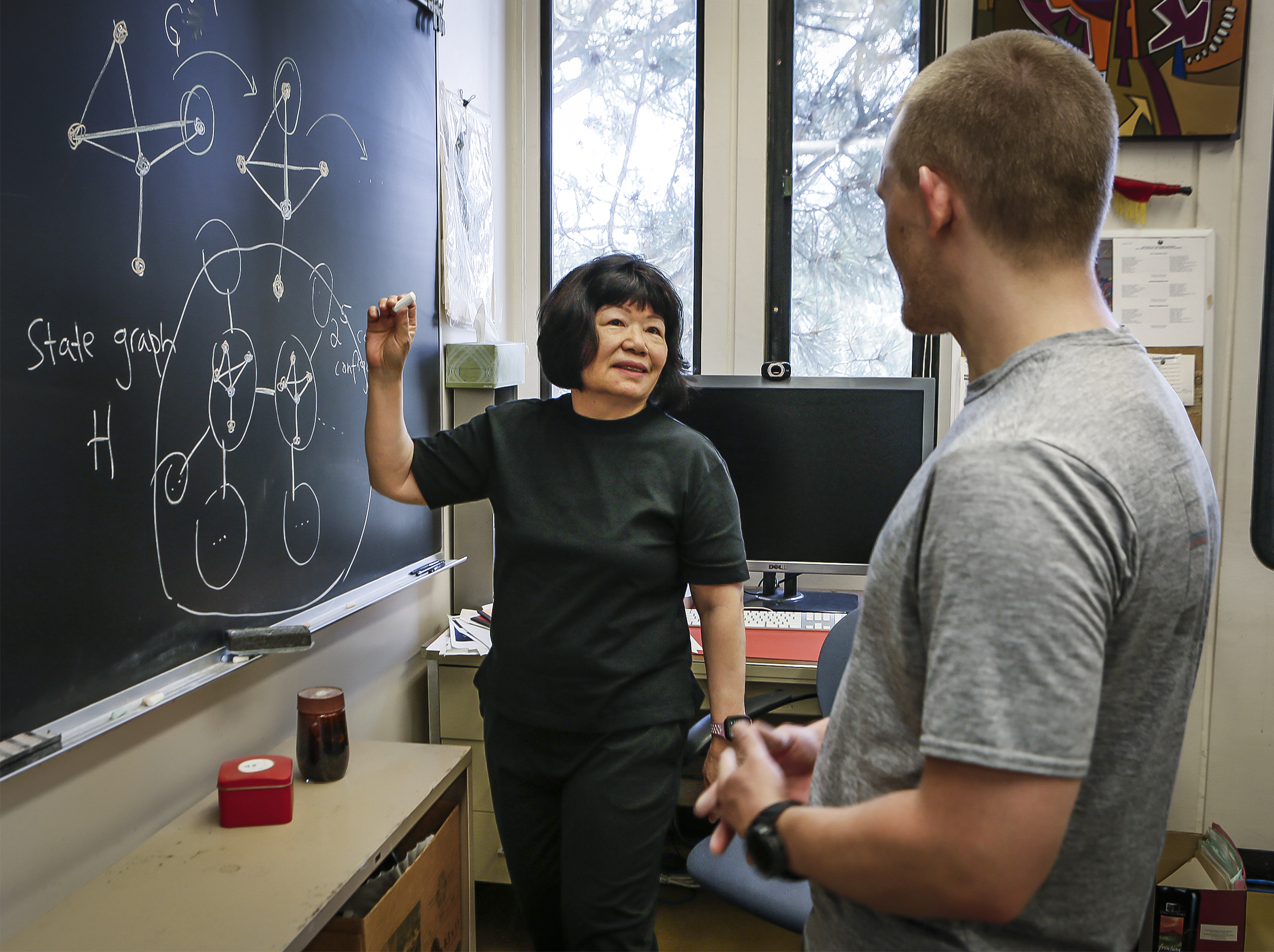
Chung with one of the graduate students she’s currently advising. “Do not give up,” she likes to tell them when they’re struggling. “A problem proves its worth by fighting back.”
Peggy Peattie for Quanta Magazine
For the past three decades, Chung has been a professor at the University of California, San Diego, where she has continued to publish groundbreaking research in graph theory, combinatorics and algorithm design. Quanta Magazine spoke with Chung about her work and the nature of the collaborations that shaped it. The interview has been condensed and edited for clarity.
One of the areas you work in is called Ramsey theory. What is it?
Ramsey theory tells you that complete disorder is impossible. In any large enough structure or data set, you’re going to find some patterns. You want to find out how large that structure needs to be for a given pattern to emerge. For example, say you’re at a party. You have a group of n people. If n is 6, there must be three people who all know each other, or three people who are all strangers. But if n is 5, if you only have five people, that statement isn’t true.
The first research problem you ever worked on — when you were in graduate school — was a version of this kind of problem, right?
In the original problem, there were two kinds of relationships: People either know or don’t know each other. But there are other kinds of relationships people might have. I thought about the case where there are four kinds of relationships among people.
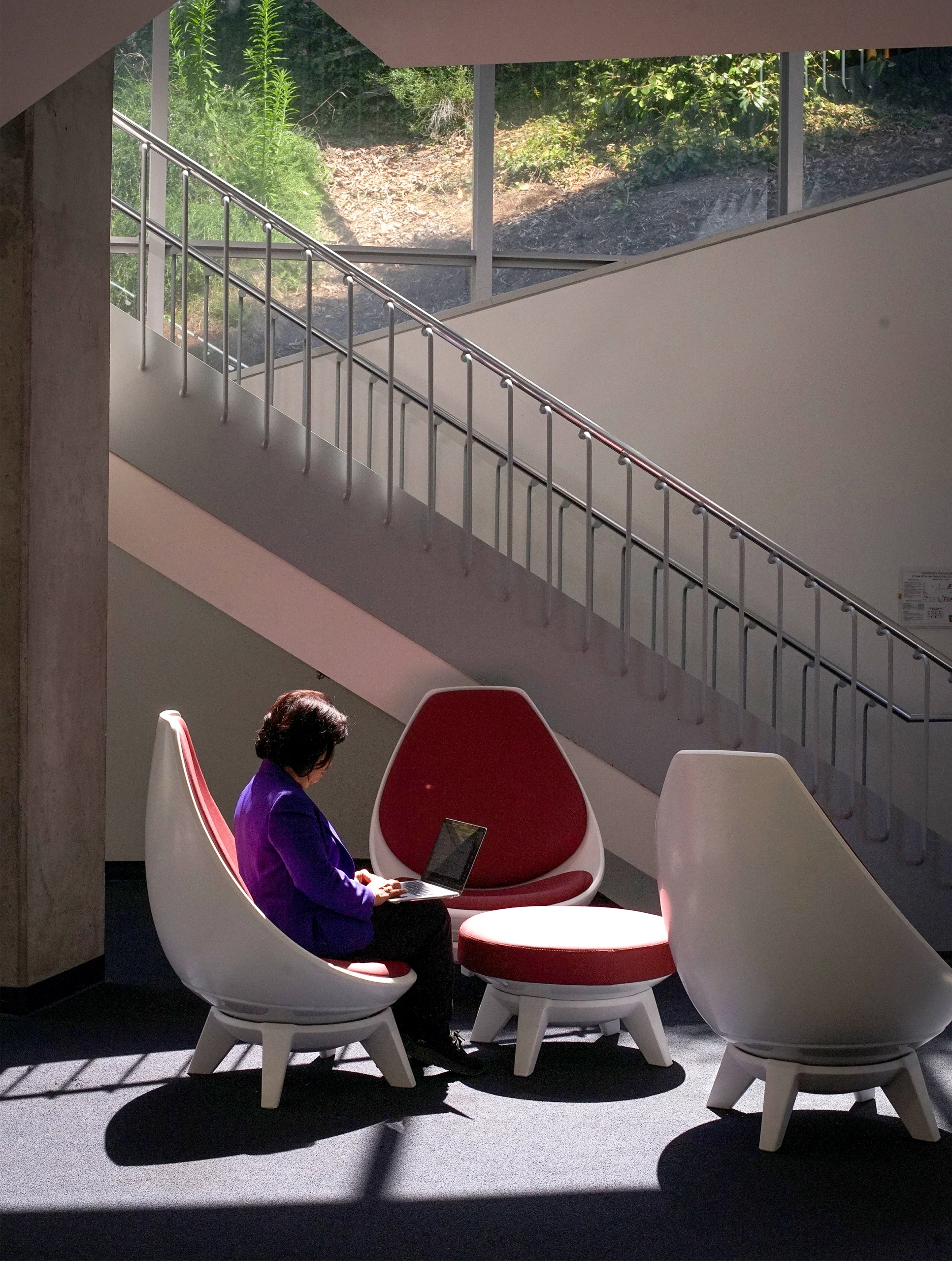
By collaborating with researchers from different backgrounds, Chung says, you can gain new perspectives and deeper motivations.
Peggy Peattie for Quanta Magazine
Two people might be best friends, colleagues, acquaintances or strangers.
You want to know the smallest n — the smallest size of the group — so that you always have a clique of three people who all have the same relationship with each other.
I was able to improve the lower bound of this “Ramsey number” to 51. It was stroke of luck.
So the Ramsey number is at least 51, but we still don’t know what its actual value is. And to date, no one has improved on your lower bound.
The problem is still unsolved today. That’s part of the charm of these Ramsey problems. These Ramsey numbers are not very big. With all the computing power today, shouldn’t someone just crank out an improved lower bound by computer? The thing that drives many people crazy is that even in this case, it’s beyond the boundary of our knowledge.
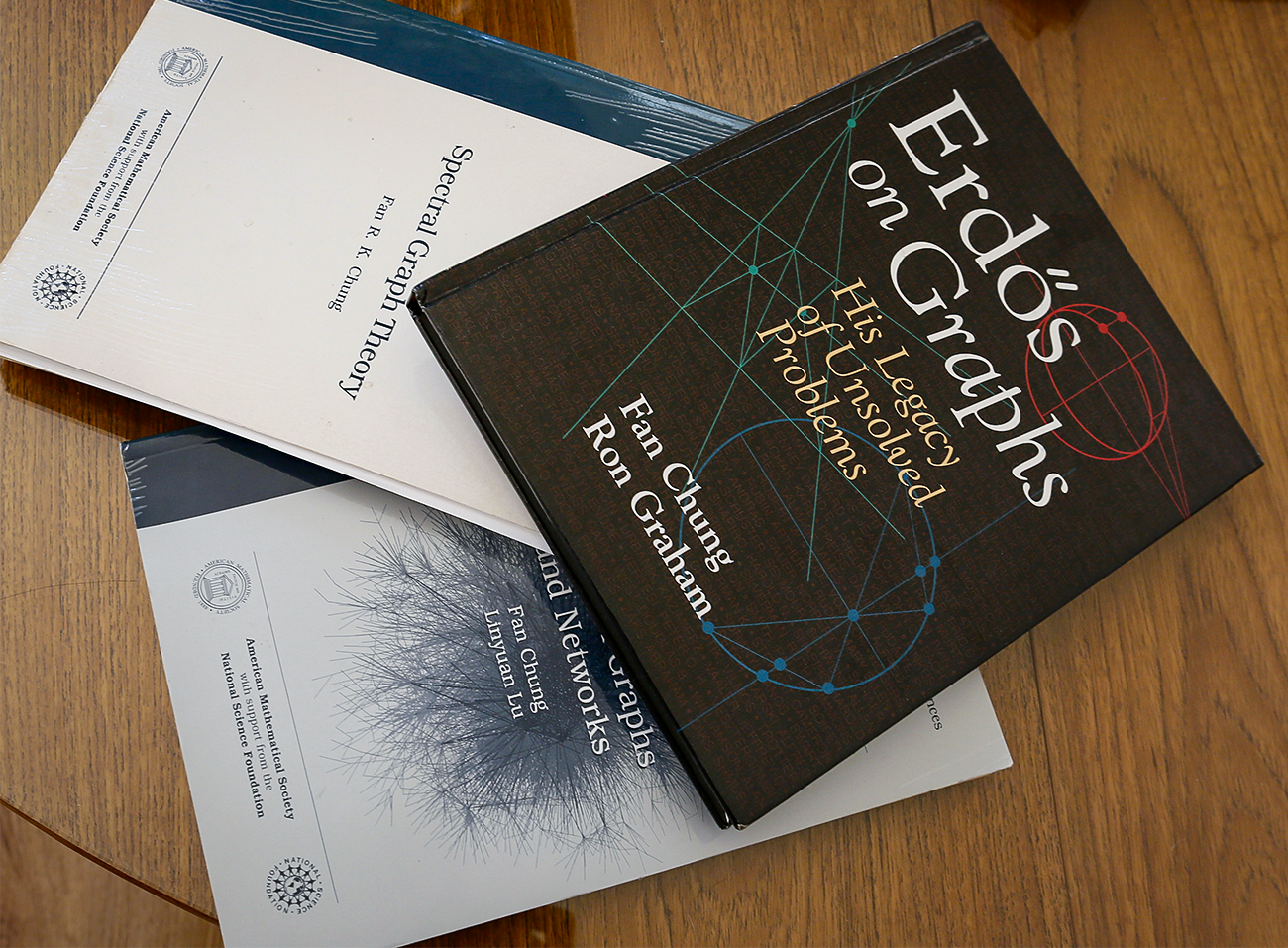
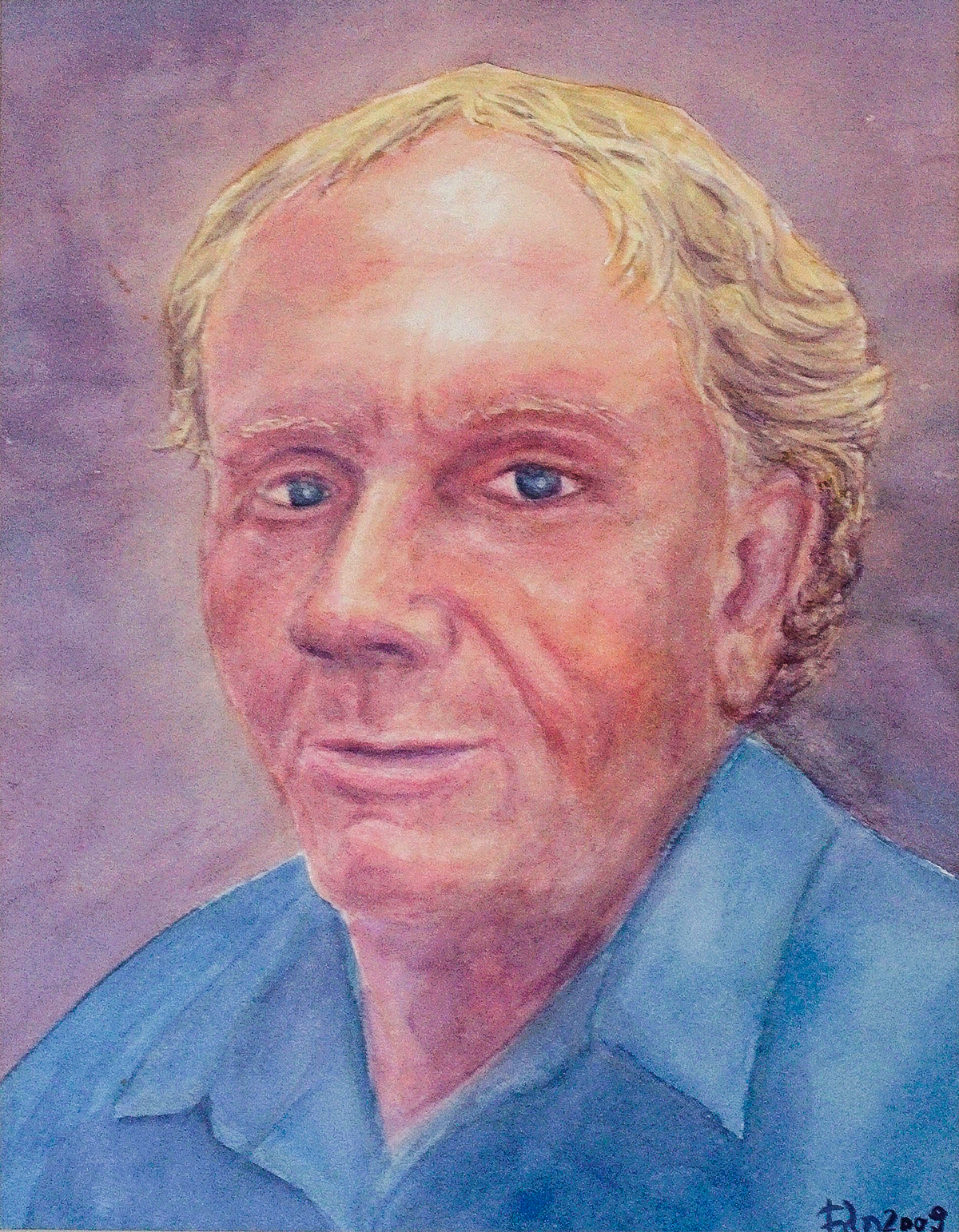
Chung cherished her relationship with Ron Graham, her late husband and closest mathematical collaborator. At her home, you can find portraits she’s painted of him (right) and the book they coauthored.
Peggy Peattie for Quanta Magazine
It’s interesting that you work on these problems about networks and relationships, because you’re also known for emphasizing the power of collaboration in mathematics.
I really cherish working with others. It’s a much deeper relationship than the usual friendship. You have this chemistry. Together, you bounce ideas back and forth, you have joint work. It’s almost like you have a kid together. You have an extra force bringing you together, year after year. I have learned a great deal from my coauthors.
Why is this kind of collaboration so important?
Mathematics is big. No one knows everything. So collaboration helps give you a broader point of view — a wider scope. Also, a problem usually will not die as easily if you’re collaborating on it. If you’re frustrated or discouraged, then your collaborator might share some light and pull you out. Usually, one piece of work will lead to another, so it’s just continued year after year. That’s the best situation. I was fortunate to have several of those collaborations going on throughout a long span of time.
I very much enjoy working with people with completely different backgrounds from me. Most of my coauthors are from other departments: They are physicists, chemists, people in computer graphics, engineers. In different areas, you approach problems very differently. You look at them from different angles, you have different ideas and ways of thinking. You even have different motivations. In mathematics, we really want rigor, and the emphasis is on the beauty and precision of the solution, of the concept, of the treatment. But my collaborators in computer science are asking: Why is it useful? What is the impact?
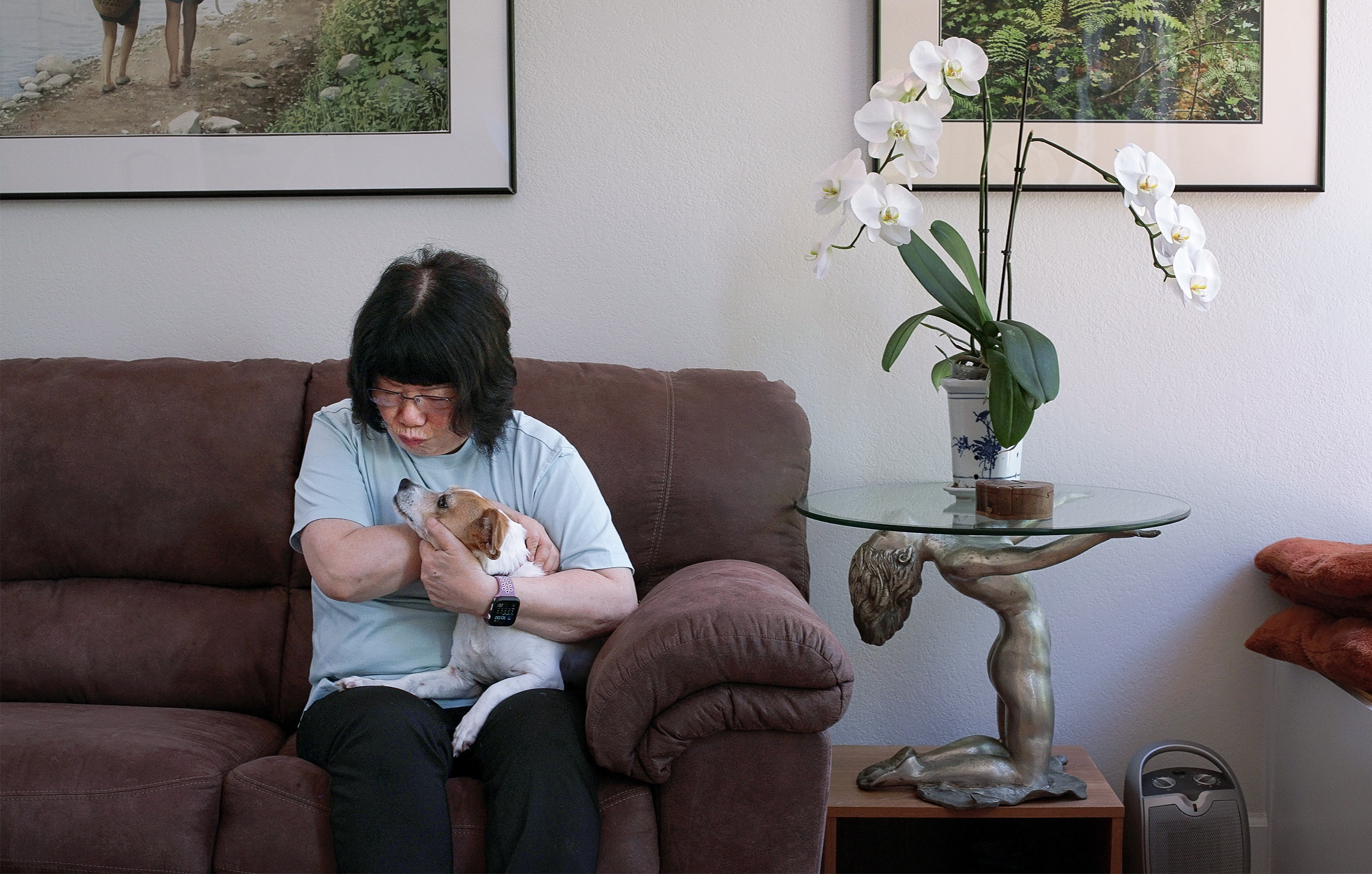
Chung and Muffin, “her constant companion,” relax at their San Diego home.
Peggy Peattie for Quanta Magazine
One big part of the collaboration is trying to get the problem in its mathematical form — figuring out the basic bones of the problem, how the problem should be posed. That’s usually the first order of things and is also usually the hardest part of the collaboration. It takes some abstraction, simplification. It’s also not a one-shot thing. The problem will keep evolving and changing.
But very often, that’s also how you find the good problems: through collaboration. One of the greatest contributions of the famous Hungarian mathematician Paul Erdős was the problems he posed. It’s not easy to pose good problems.
You collaborated with Erdős, who’s very famous for his view of math as a social activity. What was that like?
I met Erdős around the time I finished my Ph.D. It had quite a huge impact on me.
He was traveling all the time with one worn-out bag, and the bag contained very few things. He had no family, no job, no affiliation. He loved classical music. My husband Ron Graham once said, “You love music so much, take our radio with you.” He thought about it and refused. All he cared about was mathematics. It was so wonderful to see a person who’s free of all these worldly things. When he came to visit our house, we had a room for him.
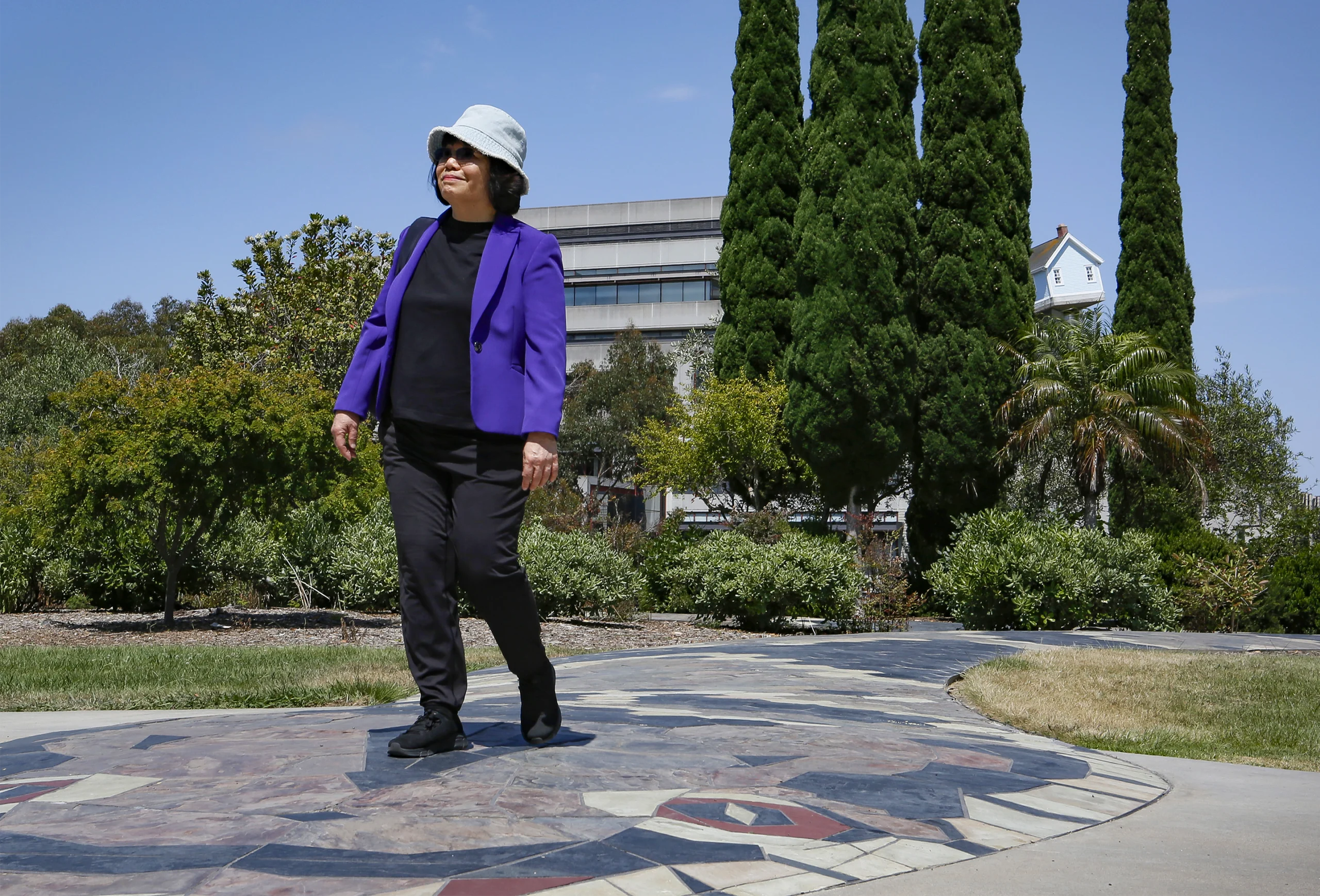
Chung strolls along the snaking paths of the University of California, San Diego, campus.
Peggy Peattie for Quanta Magazine
Mathematically, he also traveled from one place to another, bringing problems with him. Some years, I think half of my work was because of problems that had something to do with him. He was like the bees spreading pollen. Every time he came, he brought problems.
Of course, Ron was my biggest collaborator. We particularly liked to start a new project every time we traveled. And we traveled a lot.
When he passed away five years ago, we had published 101 joint papers. I knew exactly what he would say: “101 is a very good number. It’s a prime.” Then another joint paper got published [bringing that number to 102]. But a couple of weeks ago, I found out a paper with my collaborator Oliver Braun was accepted for publication. That work started with a photo he took of the whiteboard in Ron’s office. So, I’d say that gives me paper #103 with Ron. And of course, 103 is a prime number. I thought, 103 is a very good number.
You’ve talked about how the area of math you study, combinatorics, is a wellspring for collaborations and connections. Why is that the case?
A very good thing about combinatorics is that there is such an abundance of problems coming from different directions. Combinatorics bridges many different areas. You pick out whatever methods or tools you can to solve problems — from network science, data science, AI. That leads to more collaborations.
Math is a great career. It’s fun. It’s interesting. It keeps the mind curious. It’s good for making friends. It’s very good for your health.
